When did you first record music?
In 1990 when I recorded the first single of Doctor Explosion in the basement of a bar. It was dedicated to The Fleshtones! That was in Oviedo [the capital of Asturias]. In the middle of the town there was a bar called La Catedral. Before that my brother Juan opened a recording studio in 1985. I was playing drums in a band called Los Rudimentals, and one evening my brother recorded us. I don't know what happened with that recording.
What's the origin of the studio name, Circo Perrotti?
At the time that Doctor Explosion was making tours with the original line up in the late '90s, I remember that our van was broken constantly and everything was going wrong. [Bassist/keyboardist] Félix [Domínguez] was looking at the sky and said, "Oh my god, this is like a Circus Perrotti!"
I don't get the reference...
I didn't either, but then I understood it related to something that happened in my childhood. My eldest brother took me to a circus — I thought it was a very huge American circus called Ringling Bros. — but this one was the Wingling Bros., like a fake version of the Ringling Bros. They were announcing such a big event, with lions, and everything was a disaster. It was so cheap and we were so... como se dice, decepci-nado?
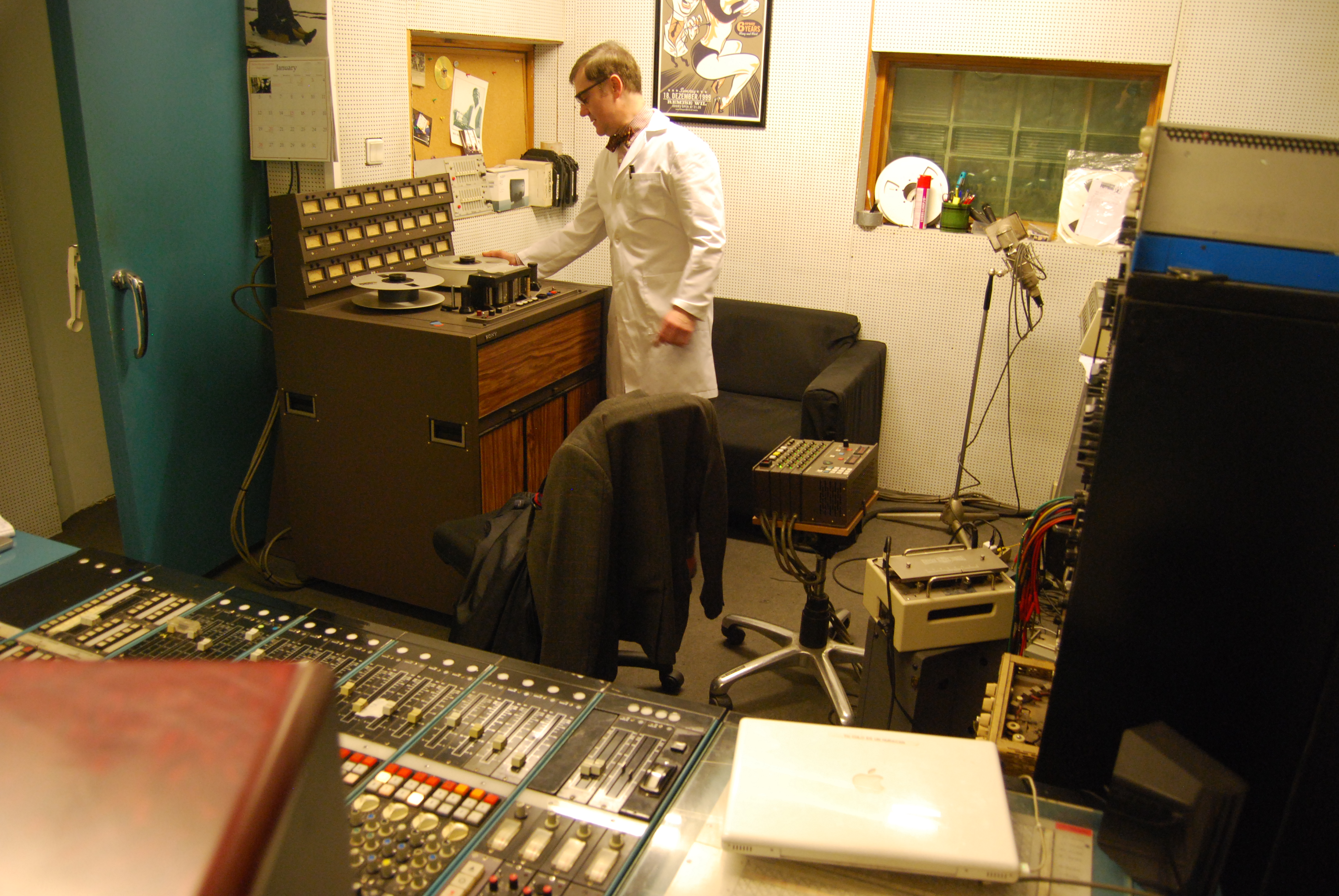
Disappointed? [laughter]
Yes! I thought it was stupid enough to name a studio starting with "circus."
When did you open Circo Perrotti?
In 2003.
Do you know many square meters do you have?
Not really. It's a small studio.
You have a nice control room, a live room...
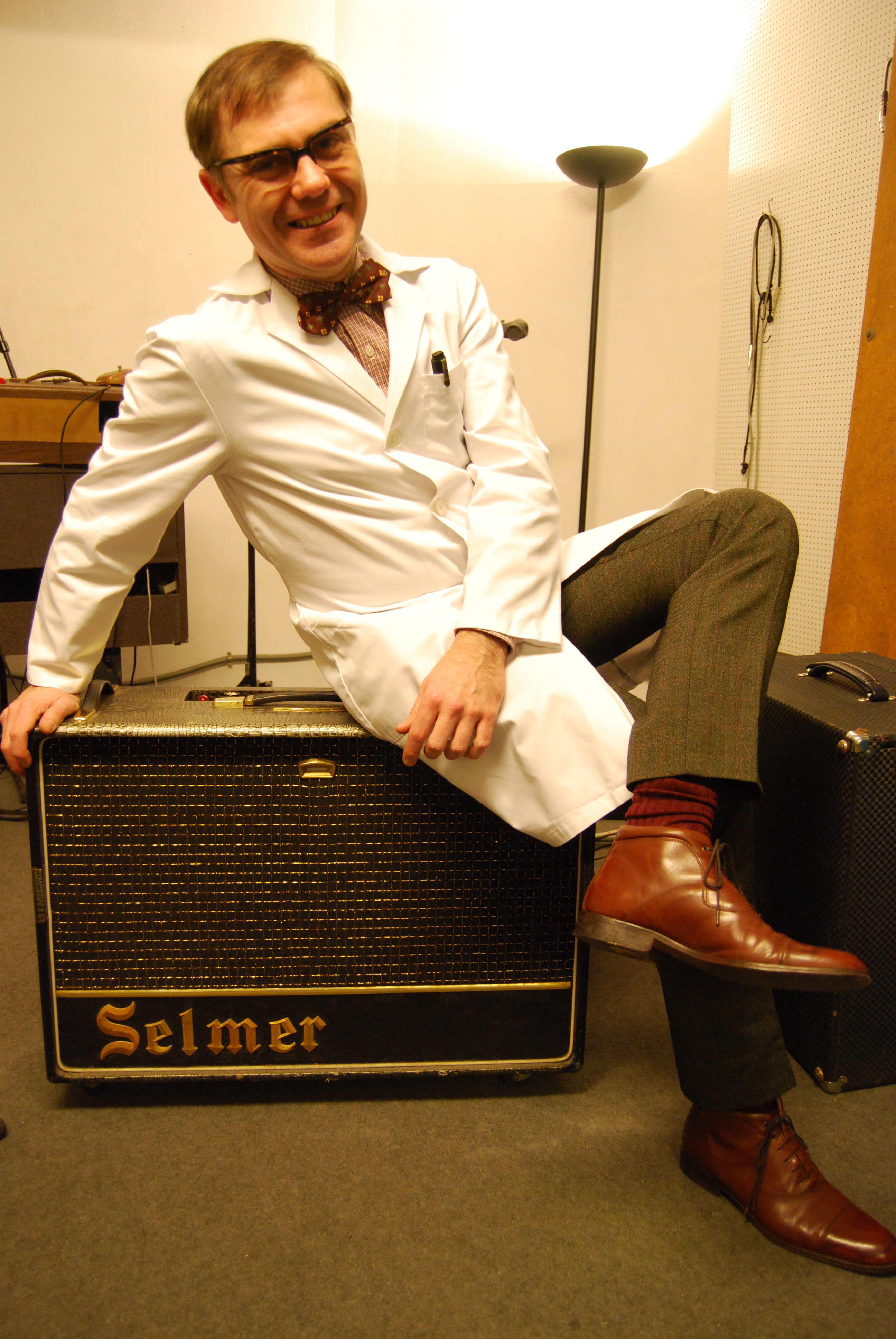
Actually two live rooms. My brother opened this studio in the mid '80s and did not succeed at all. For years it was a basement storage room for my family, until I decided to open the studio. In the late '90s we started to rehearse in this room. I had a digital recorder, so I started to make some recordings with that to do some demos. I didn't have any real intention, other than doing the demos of Doctor Explosion. But then a band that was playing gypsy/Django Reinhardt music with violin and acoustic guitars asked me, "Could you record us?" And I said, "Oh, yeah!"
Originally you said you were in Oviedo?
That was back in the '90s, when we did our first EP. Oviedo and Gijon are very close towns.
What is the attraction to recording in Gijon, besides your studio?
Gijon is a nice town. First of all it has a nice beach, which is close to the studio.
You can go surfing, right?
Sometimes. Not now, because of the cold water. We used to make nude surfing, which was really good fun.
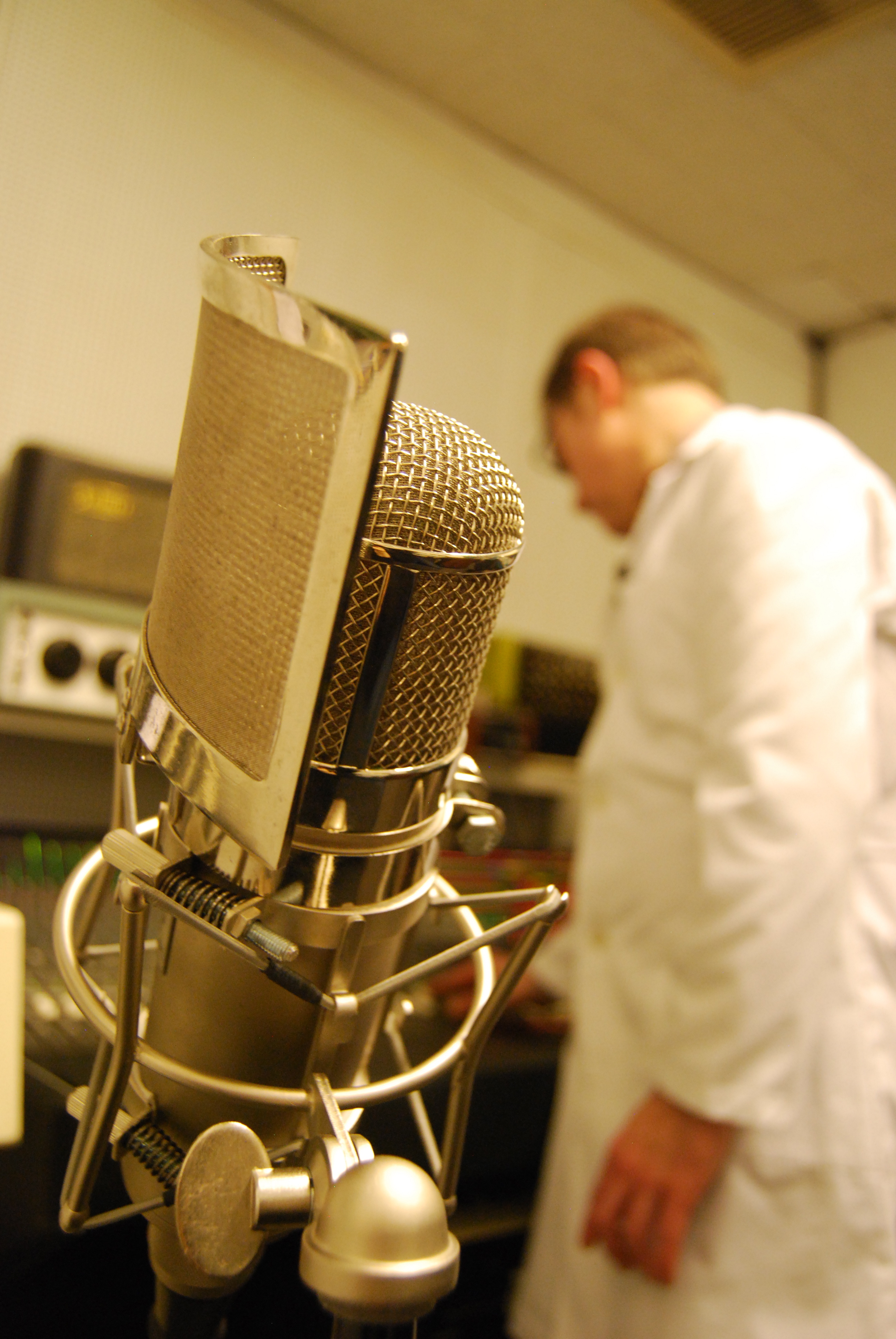
I bet. Very liberating.
It's a small town; the food is good. The town has grown up in these years, but the center is like a village and everything is at hand. There're pensions [rooming houses] in the center for, like, ten Euros each.
Groups can stay cheaply.
And it's right in front of the beach; two minutes walking.
When is the sea urchin season? You took us to the old town to eat sea urchins.
What? Oh, erizos! I think that's in the fall, close to winter. I remember when I was a child you could buy erizos from a camion [truck]. There was a man with a pala [shovel] and he put them in a sack for 25 pesetas — less than a dollar. Erizos are a hallmark of Perrotti! [laughter]
And you take bands to try a sidrería? [Cider is the traditional drink of Asturias.]
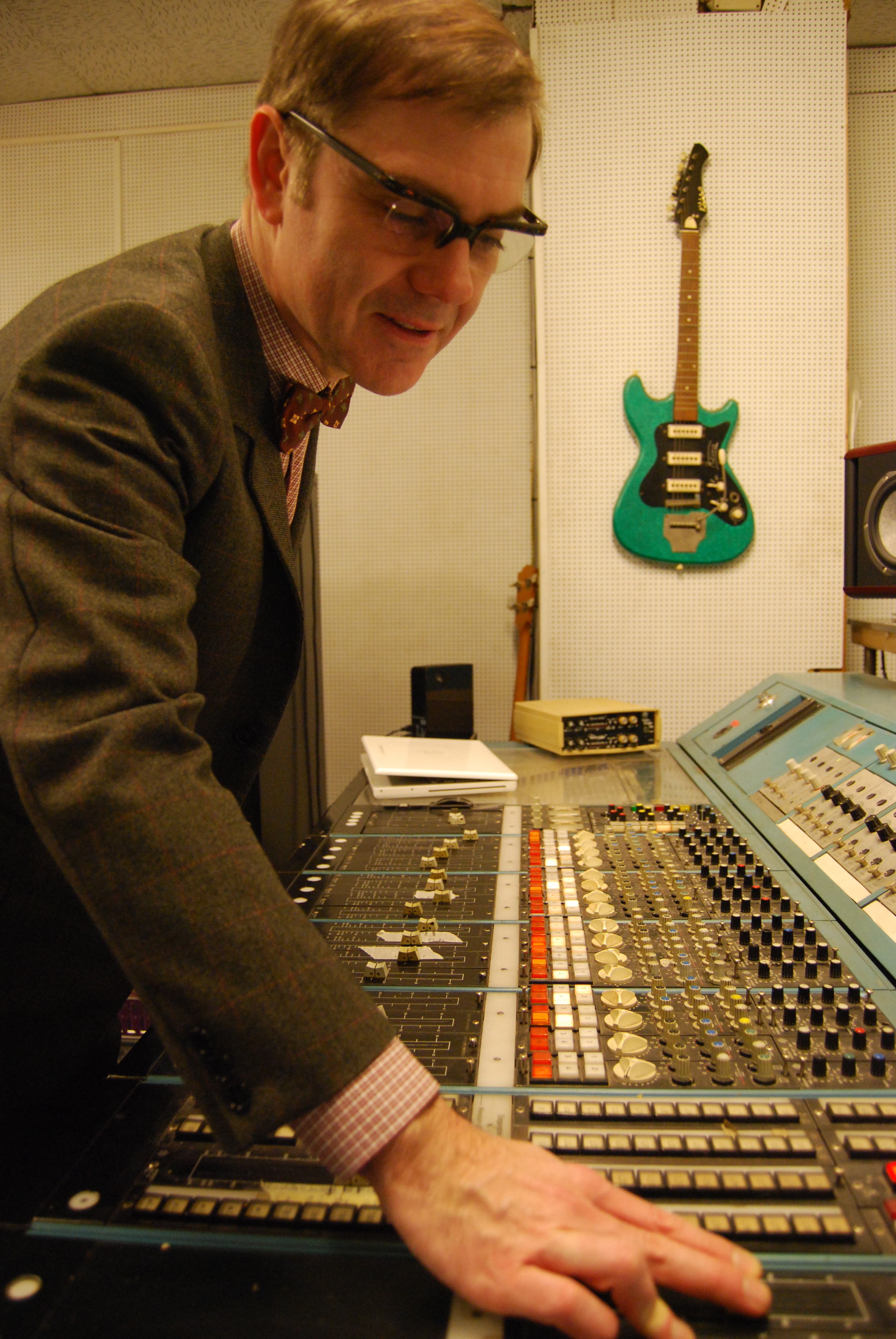
Very much! When The Ripe first arrived from Austin, Texas, they bought some bottles of cider. Nick [Yaklin], the drummer, took off his cowboy boot, put the bottle inside of his boot, and started to knock the boot on the wall, outside in the street. People were passing by, freaking out, thinking, "What's this cowboy doing here smashing this bottle?" It was to get the cork out with the pressure.
Did that work?
Very well. So when The Ripe come for a session, they are drinking cider and making recordings. A good combination.
Are there other sessions from here that stand out in your mind?
Many, actually. I produced the last album [Gijon Stomp!] of Sonny Burgess [the Sun Records artist] and the Legendary Pacers. It was going to be just a couple of songs. I invited them for free because they were playing in a festival nearby and it was an opportunity to record a historical group. The guys got so excited that, in the end, they cut a whole album.
How was it working with Sonny?
It was great. At some point I mentioned something about jazz. That pissed him off a little bit. I've always liked a lot of jazz recordings. Famous recordings made in New York; Rudy Van Gelder [Tape Op #43] stuff. I've always liked those recordings, because my brother Juan — that opened that studio in the mid-'80s — he's an extremely good piano player and he played in a jazz combo when I was 10 years old. He introduced me to Miles Davis, John Coltrane, and Dave Brubeck. Those recordings impacted me very much. So when I was talking to Sonny about this, I wanted to mention the atmosphere of that sound; but it seems to me that in the '50s jazz guys and rock and roll guys didn't fit that well together! I realized too late.
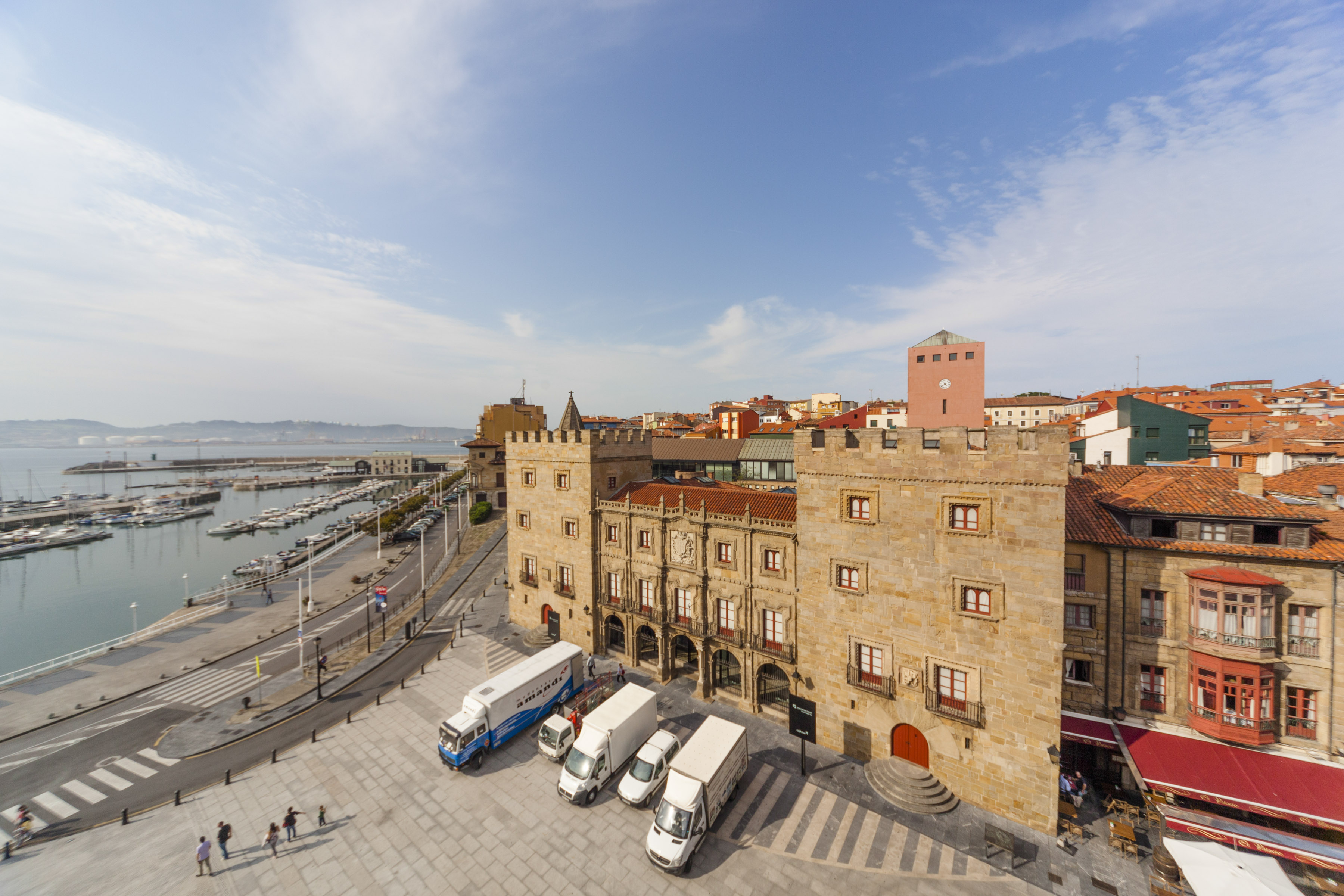
What other sessions come to mind?
The Masonics and also Billy Childish. The Masonics came first. Russ Wilkins, the drummer, produced one Doctor Explosion album [The Subnormal Revolution of Doctor Explosion] in the early '90s at Toe Rag Studio with Liam Watson [Tape Op #15, 88]. They both produced it. We're longtime friends, and I always was a big fan of Thee Milkshakes [Billy and Russ' original band]. That week recording in London at Toe Rag Studio caused me a big impact. When I was 11 I was listening to all this music from my brother: jazz, The Beatles, and also classical music. But then, with the impact of new wave, I started to collect records of Spanish and British bands like New Order, in the early '80s. At a very young age I was exposed to very different stuff, which is good. Then, late in my teen years, a friend of mine was passing me tapes of bands like the Rolling Stones and Blues Magoos. I was listening to the effects and reverb; I could lose myself in those spaces and the echo chambers. I felt it was fantastic. I always had an interest in how those sounds were produced.
So you experimented?
I didn't have access to that gear, so when I had the chance to go to Toe Rag, it was great. I'd listened to records produced in that studio, like the first album of The Kaisers [Squarehead Stomp!]. I felt, "Wow! This is really close to the things I want to do." So we had to go there to record. Our first experience of recording, in a studio in Gijon, was not very good. It was very far from what I wanted to get.
You've worked with Russian bands?
A couple bands came from Russia. This band called The Types from Moscow. Then, in 2012, Messer Chups from St. Petersburg came out. They are enthusiastic fans of rock 'n' roll and, at the same time, somewhat exotic. For me, it's an honor that they come from such a faraway place and put their trust in me. I must be up to their expectations, in all possible ways, working on their sound and arrangements, but also showing them the fun of my town; guiding them to typical restaurants and rock 'n' roll clubs. They came in 2012. At that point they probably had heard about me through other surf bands I had produced, like The Longboards, Twang Marvels, and Lorenzo Surfer Joe. But something I don't like is to focus on a style. It's boring, because in the end you wind up doing everything in that style. I've loved surf music since I was a kid — The Challengers, The Astronauts. I've done some good records of surf music...
...and you're a surfer.
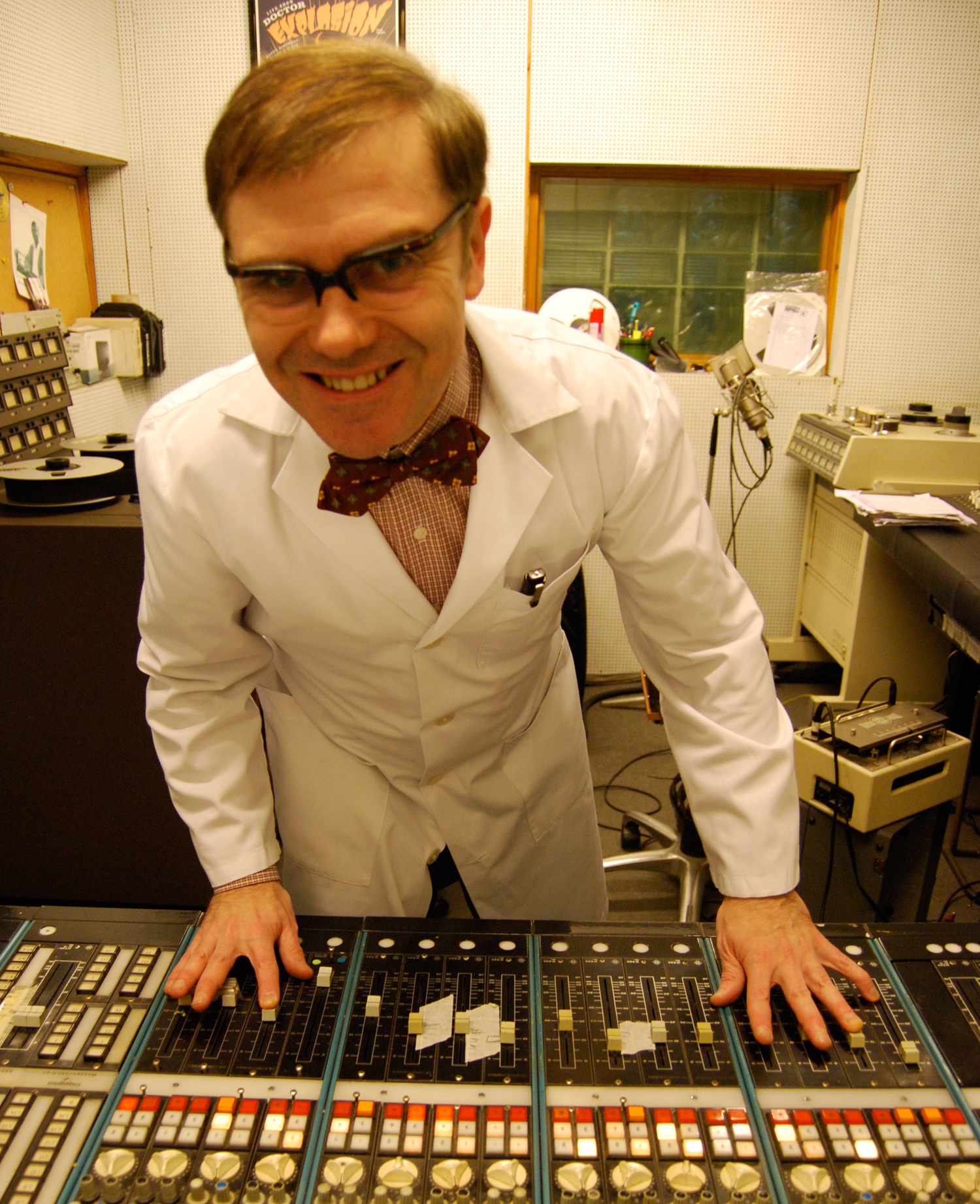
A bad surfer. But I like to record all kinds of music. It's more interesting. With drums you can succeed in so many different musical styles by changing a bit of the tuning of the skins, or playing with the distance of the mics and the amount of compression. Of course all I have is all the music I have been listening to in my life, and to use all those references. Sometimes it's in unpredictable situations; experimenting with sounds and styles. But don't get me wrong, I also enjoy to record pure '50s rockabilly or '60s beat bands, but I try to give it something extra, a "Perrotti touch." We have to be humble talking about creativity in the studio, remembering all those great anonymous recording engineers and producers from the golden decades of the '40s 'til the '60s, when so many geniuses made music history, and most of the time with no credit on the record sleeves.
What about the recording of one of my favorites, "¡Estoy Soltero!"?
Ah, by Los Guajes [from Mujeres y Centollos]. The good thing about that band is that the singer is like an actor. He really interprets his performance.
The recording has a very special atmosphere and sound.
I did the arrangement of the horns.
Real horns?
Yeah.
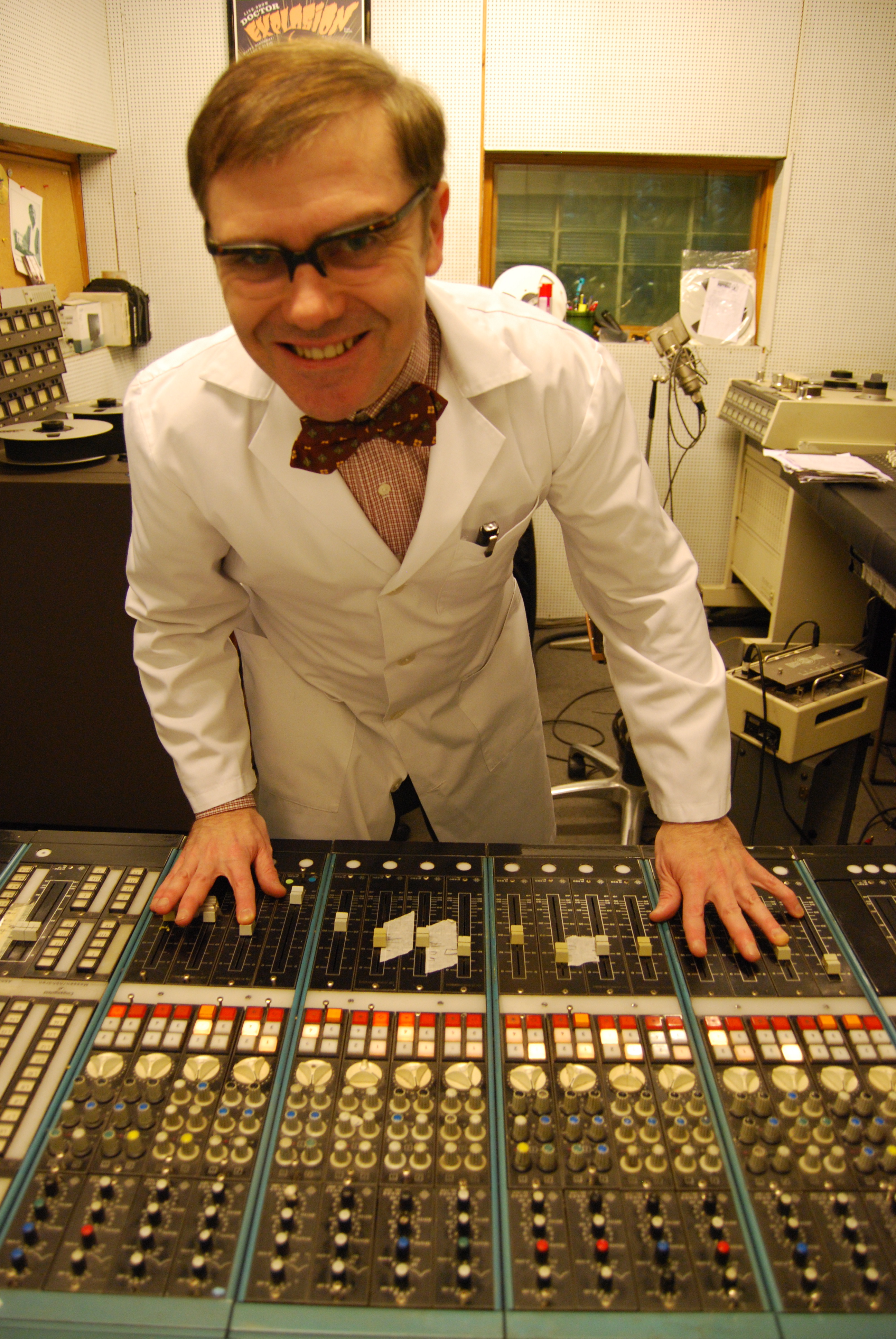
When The Fleshtones came to record two tracks, Keith [Streng, guitarist] told me, "I want to record two songs with strings." We were afraid you might suggest using some computer program.
No way!
How did you get the string section together? Is there a philharmonic orchestra in town?
I made some phones calls to some people I know. They are really good musicians. I called a viola, a violin, and a cello, and they started all playing together. I listened in the room to what they are playing and I put the microphone in a place where I thought it sounded best — and that's all. It's a nice microphone, a [Neumann] U 47.
A first for The Fleshtones — strings! Those tracks are on our new album Wheel Of Talent, and we're quite happy with that.
Of course The Fleshtones [Quatro X Quatro EP] are a special band for me since I was 18-years old. You guys were playing in Le-n. I didn't know very much about The Fleshtones, but I felt maybe this was going to be a good adventure. You impressed me that night because you played a song by Los Bravos [a Spanish '60s beat group called "Trapped." When you started that song, I fell in love immediately.
You offer a lot to people who come here. Do you have a general approach to recording?
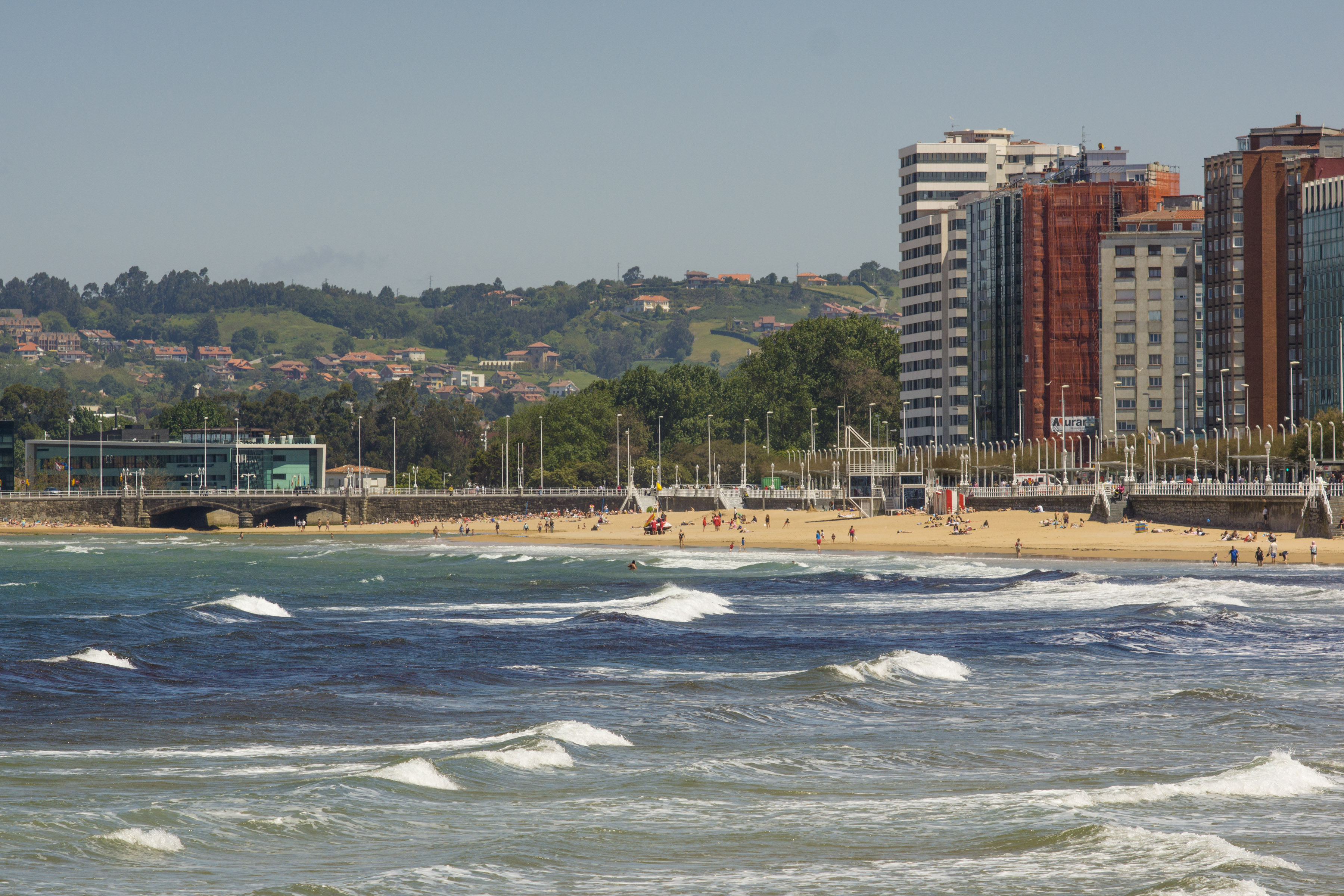
I never studied anything, if that's your question. With time you come to some conclusions that a certain way of doing things is going to work. In the beginning it was big-time mistakes, but then you develop your own tricks that work. But I don't like to fall into routines; I like to escape from them. I like to treat the bands not all the same. Every band needs a different treatment because every band has a unique sound. It's my work to find it. To help people be the band they want to be.
What's your console?
A Telefunken V800.
How did you come across that?
I went to Germany and I met this guy named Rudi. He had a radio station in his house, as well as a big collection of trains — real trains [laughter] from the '30s. He was renting a railroad for 12 euros a kilometer on Sundays. He has the Hermann Göring train. The Telefunken is huge — as you can see. It's a big sounding board, with big headroom, and very warm. It's unique because most of these boards were dismantled, because the preamps and the EQs are very desirable. All the studios wanted it as outboard gear. There're only a few still working.
What year is this board?
They were built in the late '60s to the early '70s. It was a standard in German TV and radio. The early EMI consoles had Telefunken preamps. In the EMI REDD.17 console the preamps are Telefunken or Siemens, but they are probably the same because on the V72 [preamp modules] you can see the name Telefunken here, the same as Siemens. [Telefunken was a joint venture between AEG and Siemens -LC]
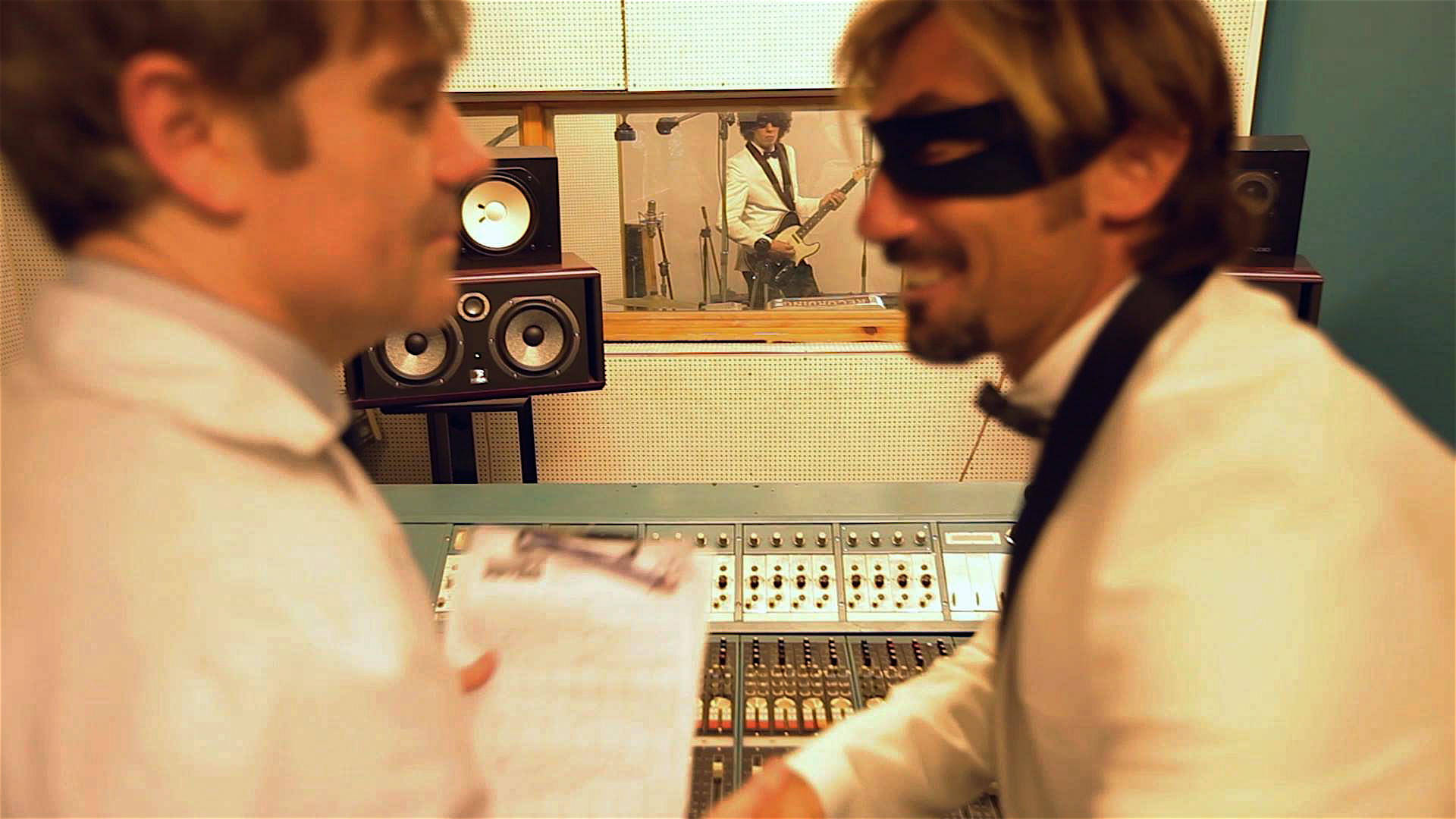
It's nice and heavy!
Because it has transformers and valves.
What does this lend to the sound?
Very warm and very rich midrange — sometimes too much. It tends to color all the sound with its unique tone. Sometimes it's something that you want, and sometimes it's not.
Talk to us about some of your outboard gear.
I like to use the EMT plates. That's something very special. I have a room upstairs with the two plates — EMT 140. I have a remote.
The Fleshtones were among the last to use the famous echo chamber at Gold Star Recording Studios in Hollywood in 1980.
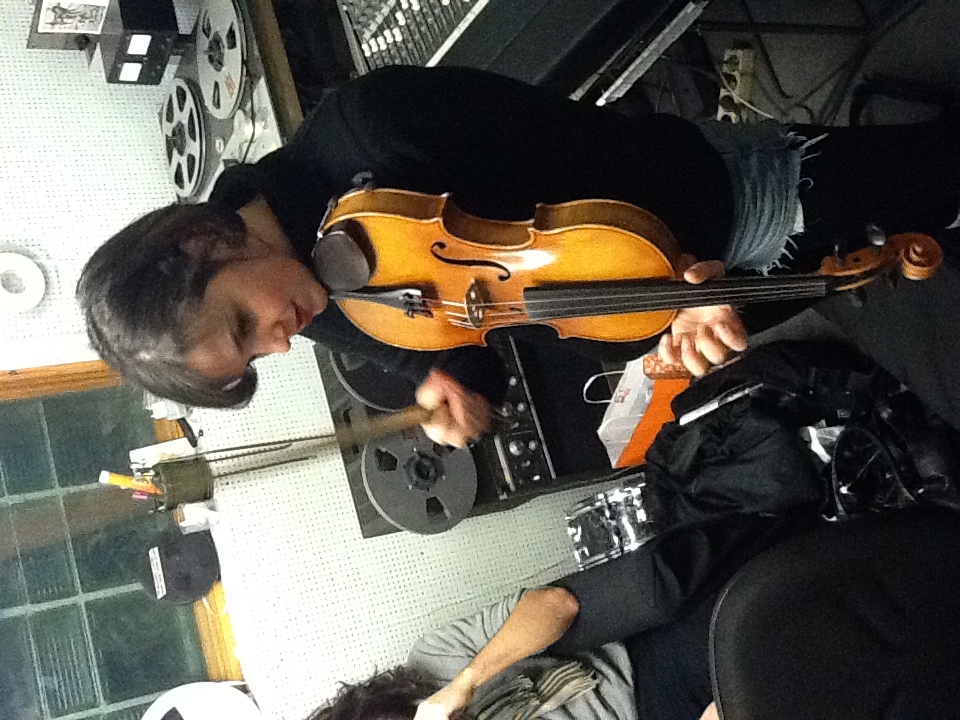
It's a pity about echo chambers; you won't see them much any more. In the stairway going to the second floor where I have the EMTs, there is a nice natural reverb. If you put the [Ampeg] B-15 flip-top amp on the bottom of the stairway and a good microphone on the top, you can record a really nice delay. You can even send that to the plates, or use a combination to create you own reverbs.
Talk to me about your tape decks.
I have three. I'm using this MCI 24-track, 2-inch, which sounds amazing. I got this one in 2013. Before I was using a 16-track, 1-inch Otari MX-70, which sounded pretty good, but I think the MCI pisses on it.
Over there you have a 2-track?
I have a couple of 2-tracks: these two Telefunken M-15 1/4-inch decks for mix down. Huge sound.
Any new equipment coming?
Actually I got a new analog to digital converter. I was using Apogee, but this technology is growing so fast. It was obsolete. On the 1/4-inch deck I was getting great treble and bass, but I found that when I transferred or mastered to digital I didn't like the result — it didn't sound as good as the 1/4-inch. On one hand you can say that part of it is the musical sound of the machine, but in the conversion you want to lose as little as possible. That's why I got this Crane Song converter called HEDD. I also recently got that Neve-style preamp [Kahayan MP-1X] made by Pablo Kahayan, a fantastic technician who is doing my maintenance in the studio. He works in Madrid, but he is originally from Argentina. He's been restoring my microphones and gear.
What's on your wish list? What is your holy grail of audio equipment?
I particularly like the Pye compressor — the 4060. I really want to have that. At the moment I have more than I need. I have a Fairchild compressor that is a really good piece of gear that I regularly use. Some pieces here are inspired by vintage pieces of equipment. For instance, the preamp of Pablo Kahayan's is inspired by the original Neve 1272; it's really, really good. The ADL 1500 [compressor], from Anthony DeMaria Labs, is like the [Universal Audio] LA-2A. Manley Labs is inspired by vintage gear, but they have their own spirit, like The Variable Mu compressor/limiter and the Massive Passive EQ. It's my main mastering section, but I also use them for tracking and mixing. I use the Fulltone Tube Tape Echo for mixing, which is like an Echoplex, but more versatile because it has different speeds and more control. Purple Audio's MC77 is inspired by the classic Urei/Universal Audio 1176. The good thing is it's cheaper and it works. The best thing is to trust your ears and not the names, the publicity, or what people talk about. In the end the important thing is that your record sounds good.
Read more about Jorge's amp and instrument collection and see more photos.
Jorge plans to open a second Circo Perrotti in Austin, TX.
www.circoperrotti.com





